


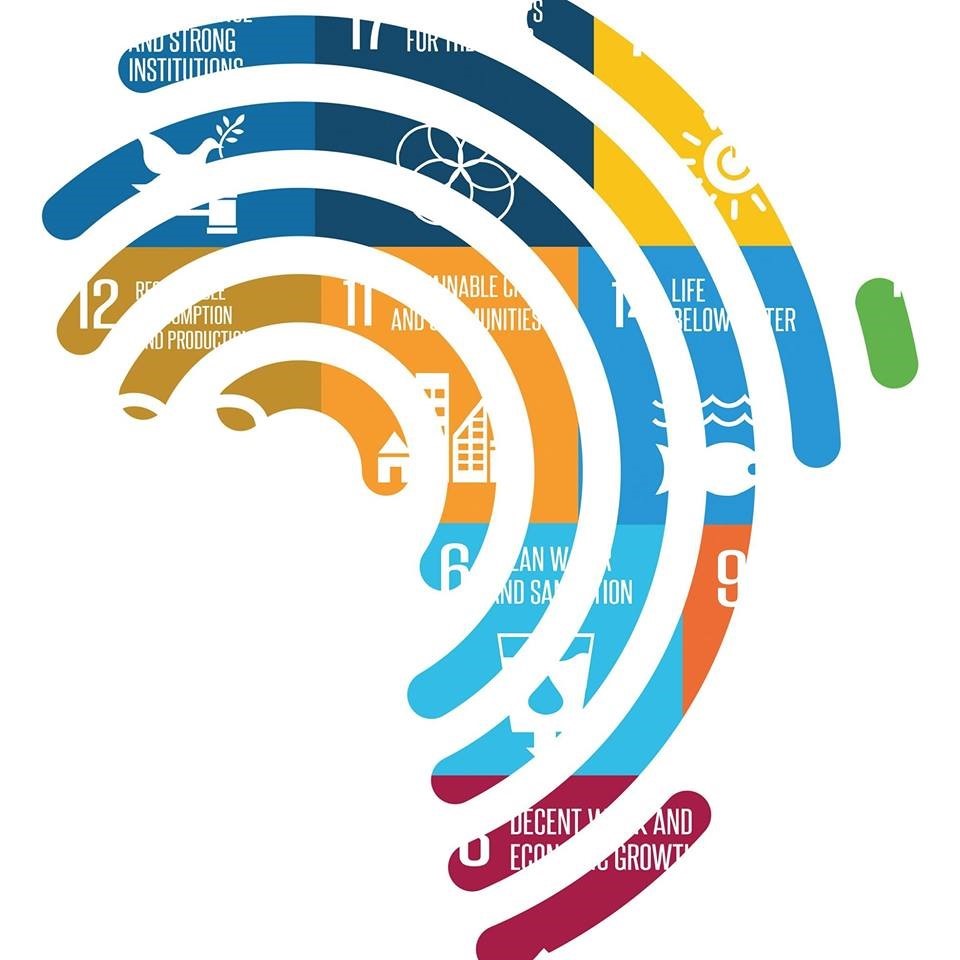
Detailed analysis of the extent to which SDGs are reflected in national policy documents of Georgia is given in the Microsoft Excel document (Linkages - in Georgian).
See also a summary of the analysis - Extent of SDGs Integration in the National Public Policy System of Georgia.
In September 2015, the UN General Assembly adopted Resolution #A/RES/70/1 and thus launched the Global 2030 Agenda for Sustainable Development. 17 Sustainable Development Goals (SDGs) and 169 associated targets are enshrined in the Resolution and balance three dimensions of sustainable development– economic, social and environmental. Beginning from 2015, the Government of Georgia (GoG) expressed high-level political support to prioritizing SDGs and demonstrated the commitment to nationalizing all 17 goals and relevant targets.
In order to ensure effective implementation of the nationalization process, the GoG opted for a horizontal model of integrating existing policy documents in the 2030 Agenda. In contrast with the vertical model, when a new overarching sustainable development strategy is developed, horizontal integration implies linking and reflecting the SDGs in existing thematic strategies and action plans.
The given analysis aims at ascertaining to what extent existing national policy documents contain obligations in line with SDG indicators. The evaluation will assist the GoG to identify challenges and take relevant steps in regards to nationalizing specific SDGs.
Methodology
In the process of identifying linkages, IDFI studied over 70 strategic documents and ascertained to what extent they included goals and indicators of nationalized SDGs. As compared to the evaluation conducted within the auspices of the MAPS (Mainstreaming, Acceleration and Policy Support) mission the main advantage of the analysis conducted by IDFI is that instead of evaluating linkages at the level of the SDG targets, it goes into more detail and evaluates linkages at the level of the SDG target indicators. During the research process, IDFI analyzed dozens of policy documents, which were not used by the MAPS mission (see Table 1).
In order to evaluate the level of SDGs integration in the national public policy system of Georgia IDFI referred to the guiding principles elaborated by the United Nations Development Programme (UNDP), based on which three possible options of linkages were identified:
Full linkage: at least one national policy document includes a commitment, that fully corresponds to an SDG target indicator or two or more national policy documents include commitments that taken together fully comply with an SDG target indicator.
Partial linkage: national policy document/documents include a commitment/commitments which either separately or together fail to completely reflect the scope and ambition of an SDG target indicator.
No linkage: None of the national policy documents include a commitment that relates to an SDG target indicator.
Summary of Linkages
Almost half of SDGs indicators are only partially reflected in national policy documents, 28% of the indicators are not reflected in any strategies or action plans and 23% of them are fully covered by national policy documents (See Graph 1). For the successful implementation of the Agenda 2030 it is crucial that all nationalized target indicators are fully reflected in relevant state strategies and action plans.
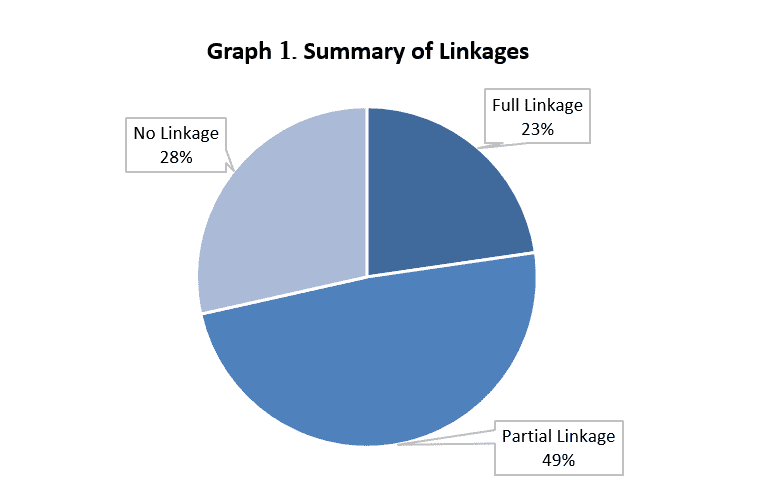
The highest number of indicators are fully linked with national policy documents in the cases of SDG 3 and SDG 16, with 21 and 12 linkages accordingly. No full linkage was found in the cases of SDG 1, SDG 6, SDG 7, SDG 9, SDG 11 and SDG 12 indicators (See Graph 2).
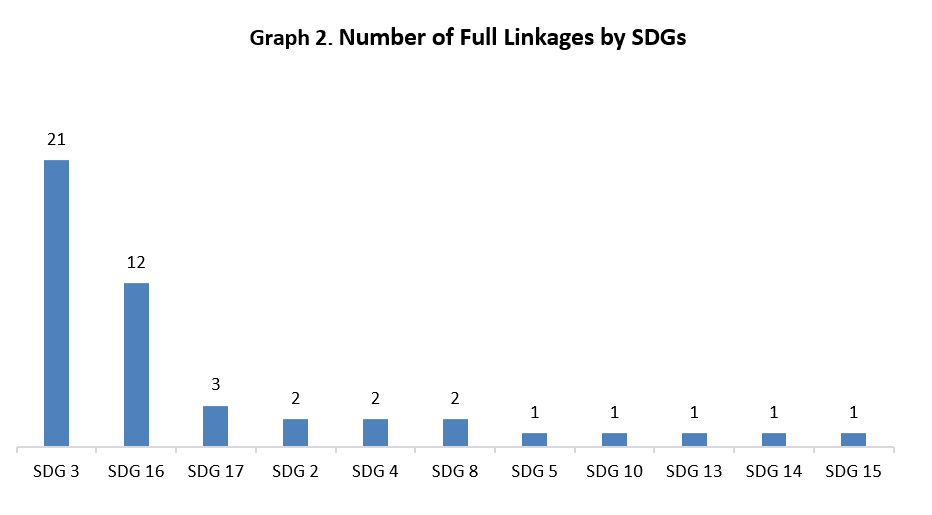
As for the number of partial linkages, the highest number of indicators are linked with national policy documents in the case of SDG 16 – 37 indicators and SDG 5 – 14 indicators. There is no partial linkage between any of SDG 13 indicators and national policy documents (See Graph 3).
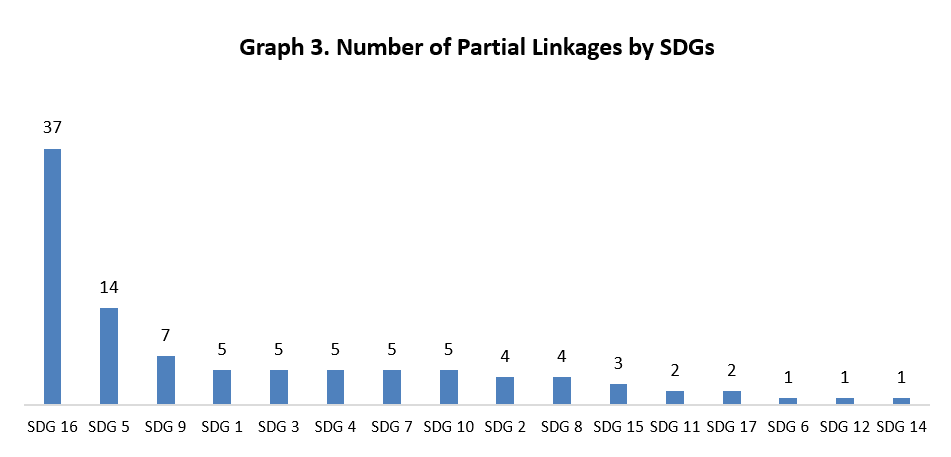
The highest number of indicators with no linkages to national policy documents were observed in cases of SDG 4, SDG 8, SDG 16 and SDG 3, accordingly with 12, 11, 10 and 9 indicators. No such indicators were found in cases of SDG 1, SDG 7, SDG 11, SDG 12, SDG 13 and SDG 14 (See Graph 4).
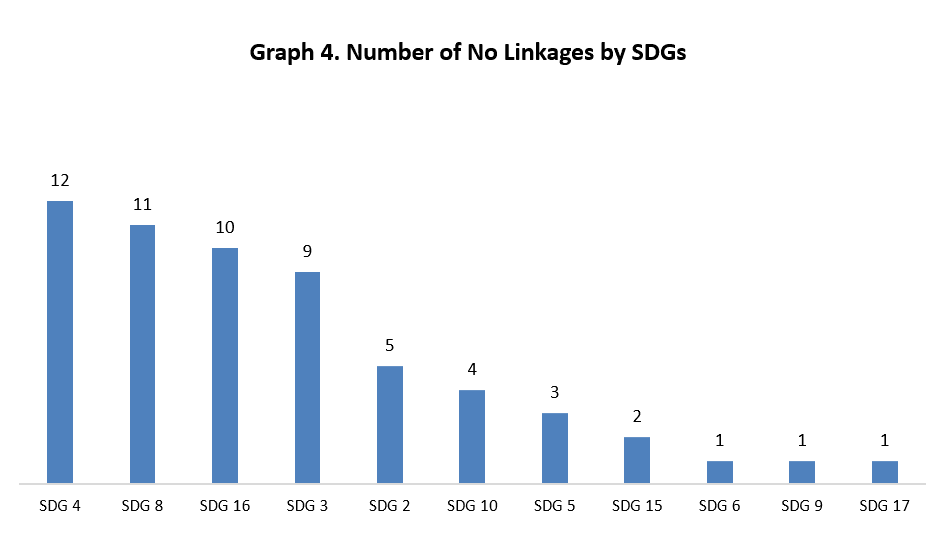
Full quantitative analysis of the extent to which SDGs indicators are reflected in national policy documents is given in Graph 5.
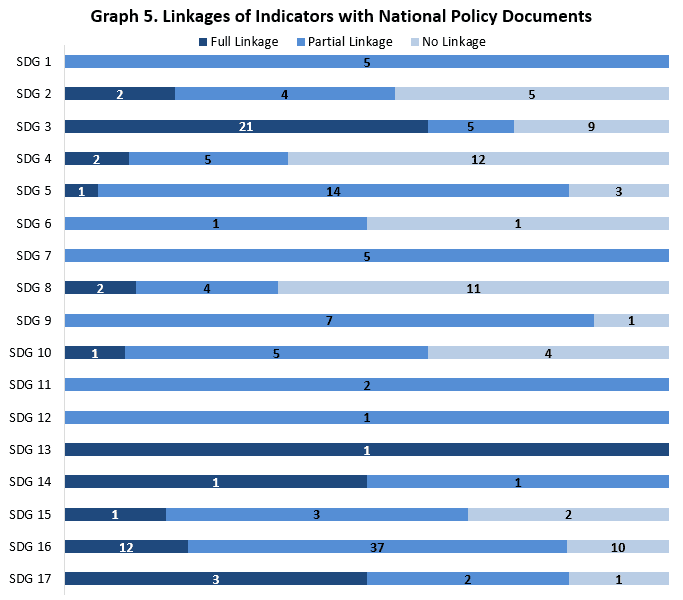
/public/upload/01Nino/mari/SDG_linkages_overview_Eng.pdf